

Exploring our past to sort out myth from reality
Share this Page on
Facebook or Twitter

These are the voyages of the TimeShip Anachron.
Our Mission: To boldly explore the past, dispelling
mythinformation and mythconceptions
of American History along the way.
 Visit us on Facebook
Visit us on Facebook
Meet MythAmerica LITE
Futurama
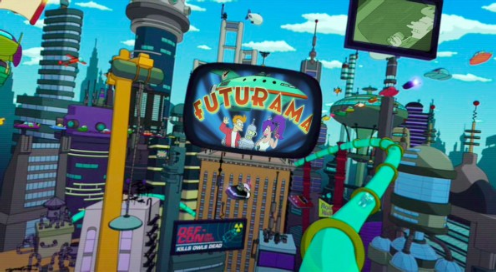
Mention “Futurama” to young people of the 21st century and they will immediately assume you are speaking of a wildly popular sci-
But this blog entry isn’t about that Futurama. It’s about this Futurama.
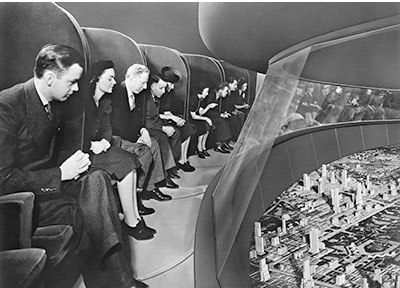
The picture above is obviously not a cartoon, and obviously not from recent times.
This is a scene from the interior of the “original” Futurama, a massive, wildly popular attraction at the 1939 World’s Fair in New York City, a splendiferous, futuristic fair nick-
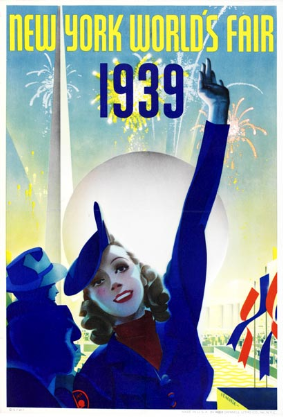
Much like some of the modern rides at Walt Disney World, visitors to the Futurama attraction would ride in comfortable seats, listening to a mellow-
Sponsored by General Motors, the main point of the attraction was to promote the idea of a proposed national system of limited-

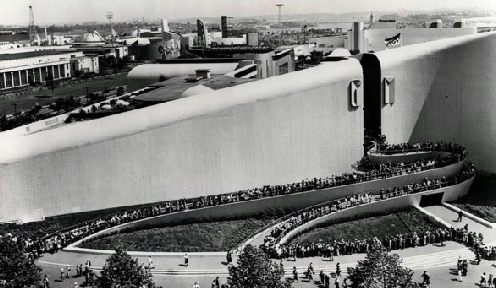
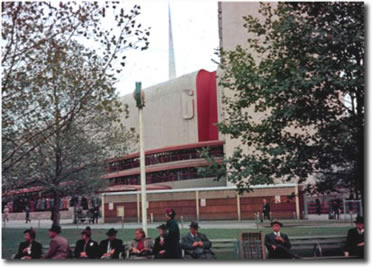
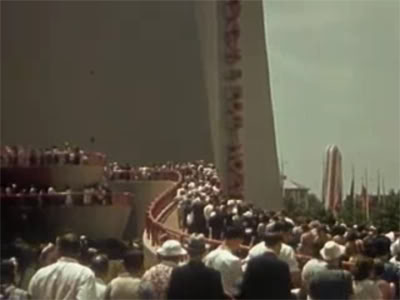
The attraction was designed by famous industrial designer Norman Bel Geddes, shown here tinkering with some of the diorama planning models.
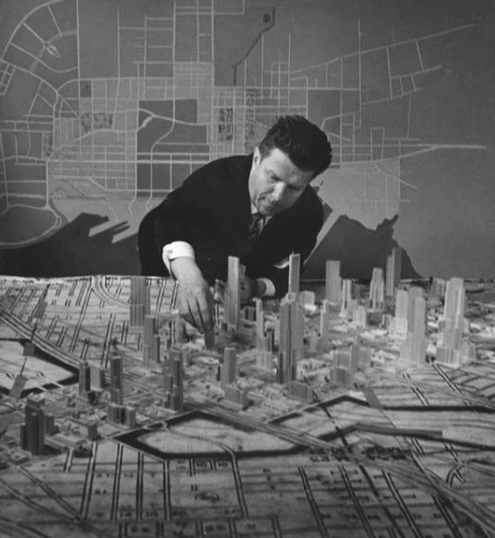
The scale was enormous, since it had to reach from sea to shining sea of America. Here are some workers getting the scenes ready for the opening day.
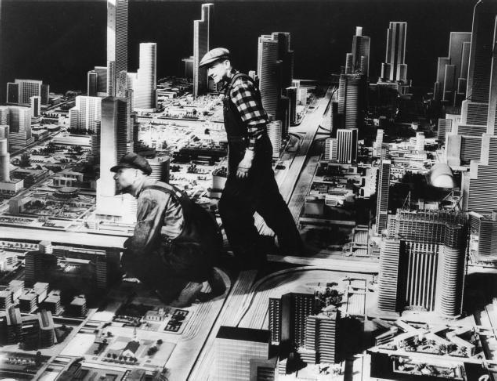
Here’s an overview of how the attraction was designed.
Compared to other “visions of the future,” Bel Geddes’ was rather achievable—the most advanced technology posited was the automated highway system, of which General Motors built a working prototype by 1960.
Futurama is widely held to have first introduced the general American public to the concept of a network of expressways connecting the nation. … Bel Geddes expounds upon his design in his book Magic Motorways, stating:
“Futurama is a large-
He had acknowledged this in the belief that a “free-
The modeled highway construction emphasized hope for the future as it served as a proposed solution to traffic congestion of the day, and demonstrated the probable development of traffic in proportion to the automotive growth of the next twenty years. Bel Geddes assumed that the automobile would be the same type of carrier and still the most common means of transportation in 1960, albeit with increased vehicle use and traffic lanes also capable of much higher speeds.
To meet these assumptions, four general ideas for improvement were incorporated into the exhibition showcase. First, that each section of road be designed to receive greater capacity of traffic. Second, that traffic moving in one direction could be in complete isolation to traffic moving in any other. Third, segregating traffic by subdividing towns and cities into certain units that restrict traffic and allow pedestrians to predominate. And fourth, consequent traffic control for predetermined maximum and minimum speeds. Through this, the exhibition was designed to inspire greater public enthusiasm and support for the constructive work and planning by engineers and public officials who had contributed so much toward improvement of streets and highways.
… The highway system was supported within a one-
Bel Geddes’ “future” was synonymous with technological process, no less in its simulated low-
This scale was modelled off 408 topographical sections based on aerial photographs of different regions of the US provided by the pioneering company Fairchild Aerial Surveys.
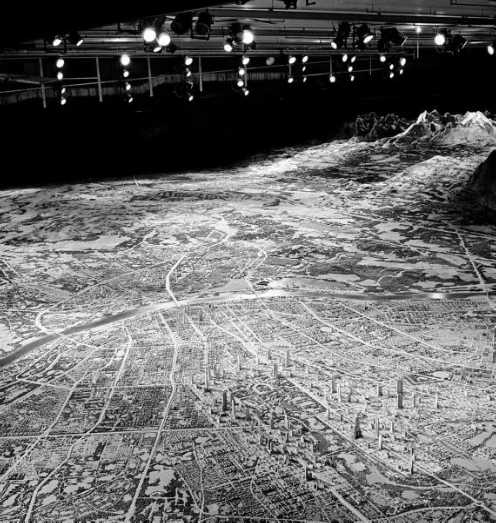
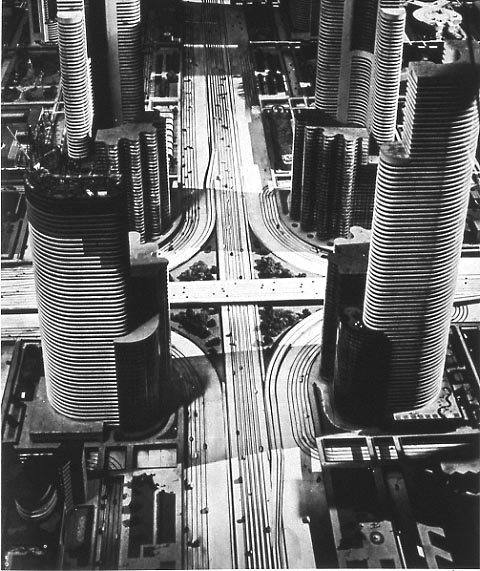
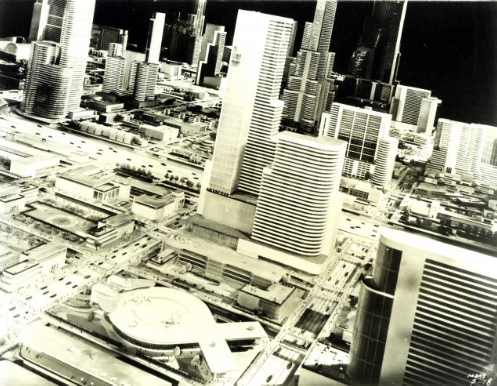
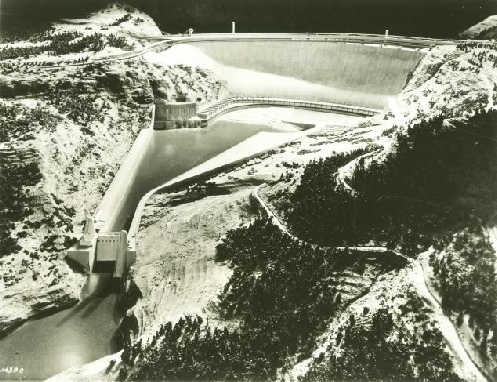
Lots of little “touches” were added by the thousands, to “breathe life” into the scenes. For instance, there was the “wedding party on the steps of a country church, complete with bride in lace, groom in best suit, flowers, and parson—all in the scale of 200 to 1 and arranged to be seen by the visitor as if from an airplane flying overhead.” And even perhaps more poignant...”a batch of little houses each the size of a matchbox. But these aren’t ordinary little houses, they are tumbled down houses, with leaky roofs and broken windows. They have old-
Yes, you were to envision yourself “flying across country” and looking out your airplane window, down on America. At the beginning you were high in the sky, looking down on tiny buildings as you passed over cities. As you approached closer to the end of the ride, the dioramas were larger and larger, as if you were getting closer and closer to the ground. At the end, you stepped out of your seat and found yourself in a full-
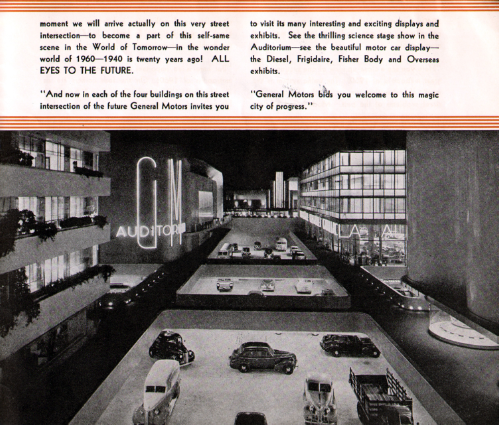
And on your way out of the attraction, you were issued your “I have seen the future” button.
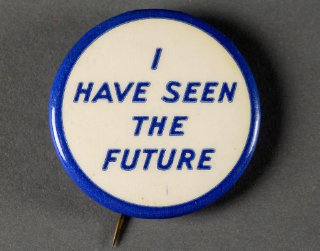
If you have the time to spare, below is a fascinating 23-
~~~~~
If you enjoyed reading about the futuristic past of the 1939 World’s Fair, you will want to check out the past’s grocery store of the future in Flash Gordon Goes Grocery Shopping.